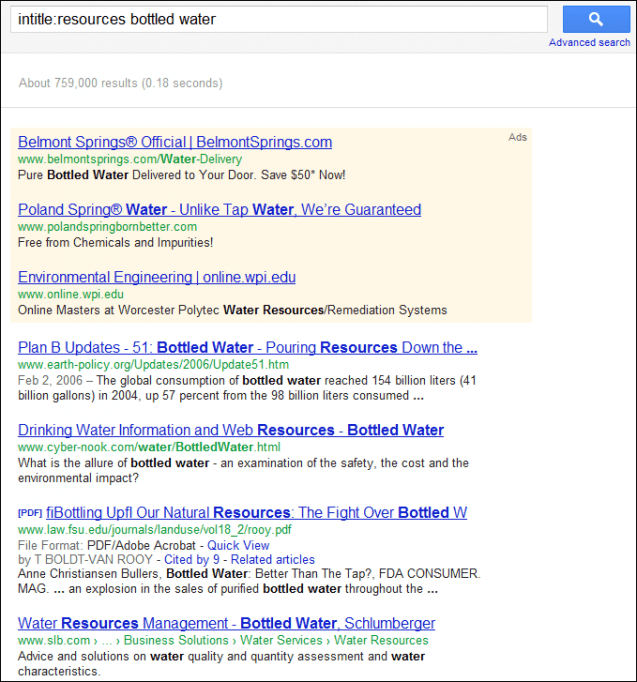For anyone new to SEO who will be working on link building and content marketing projects, one of the trickiest and most important things to learn as you get started is how to evaluate a link prospect. Understanding the value of a link is a foundational element of not only link building, but also content strategy – many times when you’re creating a piece of content designed to target certain types of linkers, you’ll need to understand how to value a potential link to be able to determine if creating the content and actually getting the link will even be worth the effort.
Getting Started
The first thing I find helpful in explaining how to evaluate a link prospect is to get used to hearing the phrase “it depends” in your internal dialog. Does page rank matter? If site A has more links in Yahoo! Site Explorer but site B has a higher Moz Rank, which is better? How important is the cache date if I’m evaluating a resource link?
It Depends
It depends on your backlink profile, your competitors’ backlink profiles, the competitiveness of the keyword and keyword set you’re attempting to rank for, and a number of other factors. Consider that your blanket disclaimer: you’re evaluating the impact of a link on an algorithm you can’t ever have full knowledge of and you’re attempting to take into account a tremendous number of different factors. It always depends, and it’s probably impossible to know with 100% certainty all the time which links will be the most impactful.
Resources
All of that said, as SEOs we still need to prioritize our actions, so we need to be able to decide which sites to reach out to and which sites to design content for. And there are some great resources to get a wet-behind-the-ears link builder started, such as:
- Wiep Knol’s Link Value Factors
- Ross Hudgens’ Determining Lifetime Link Value
- 25 Ways to Qualify Great Links by Adam Melson of Seer Interactive
- Link Anatomy – Understanding the Value of a Link by Dan Deceuster on YouMoz
- The True Value of Links by Peter D on SEO Book
- The Five Minute Link Building Test by Todd Malicoat (the post is actually from 2006 but still pretty accurate)
- Link Building ROI – Measure with Caution by Eric Ward
- Good Metrics to Determine the Link Value – NOT Toolbar Page Rank by Julie Joyce
- 11 Experts on Link Development Speak Out by Sugar Rae
- How to Train a Link Builder by Peter Attia on YouMoz
An Example
If you set a new link builder loose on those resources they would, in all likelihood, come back with a pretty solid understanding of the value of a link. But a lot of people get more value out of a hard and fast, real world example, so I thought we’d work through one here.
Let’s imagine we’re promoting some content having to do with the environmental impact that results from the bottled water industry.
We start with a fairly standard search query operator to try to identify link prospects (we won’t get into link prospecting here, as that’s another post altogether, but obviously we’ll want to help them understand the process and introduce them to our favorite tools for prospecting – I like BuzzStream’s link prospecting tools, Ontolo’s toolset, and of course good old fashioned advanced query operators):

Now, walk through the SERP with the newbie. This will give you a chance to not only help them understand “industry best practices”, but also to infuse them with a firm understanding of how you value links even amongst relatively like-minded SEOs not everyone will have exactly the same interpretation of which factors to focus on when, and why. (There’s a good discussion of the importance of this sort of dialog and how to execute this in this Whiteboard Friday video on SEO Moz between Ross Hudgeons and Tom Critchlow).
Anyway, we now want to take our link builder through this SERP and help them to understand how we see a list of potential prospects like this. Looking quickly we see a lot of authoritative sites with resource pages. Help them understand that while a lot of these actually won’t link to us, that’s OK because some of the results here may.
Recommendations
Since I want my link builders to be able to very quickly analyze quality of these potential link partners, I’ll recommend they use SEO for FireFox and the SEO Toolbar to get a quick look at some quick, high level metrics such as:
- The Subdomain’s Toolbar Page Rank – I know, gasp right? But I do find that in combination with other metrics and considerations, TBPR is still a useful, directionally indicative measure of the link popularity of a site or page. I want to focus on subdomain here because in many instances the page may be stranded on a section of the site that isn’t well linked within the main site.
- The Page’s Toolbar Page Rank – Same holds true here, but I’m interested in the number for the page itself.
- The Number of Links to the Domain, Subdomain & Page – This is where the SEO Book tools are really handy, as they give you a fantastic snapshot of what YSE, Majestic, and SEO Moz have in terms of links to this prospect. Each of the tools has strengths and weaknesses, so getting a quick snapshot of each link metric is invaluable.
- Cached Date of the Page/Site – How frequently is this page and this site crawled?
- Age of the Domain and the Document You Can Get a Link From – Obviously older, more trusted documents will typically be better here.
- Which Pages (if Any) Link Out? – Obviously the key question here is ultimately: can I get a link from this site? If so, where? (If you’re looking to grab the list of outbound links on a resource page or link list Citation Labs’ Outbound Link Scraper and BuzzStream’s extract URLs tool are both really handy).
- Content Quality – Is the content high quality (ie not written in broken English), are there links to high quality resources (but maybe not too high quality – we don’t want a government document that only links out to other government resources), is there anything spammy or shady going on on the page?
- Promotion of the Page – Is the page being promoted by the linker themselves – ie does it have social signal (has it been retweeted, liked, plussed, commented on, etc.) and links pointing to the page itself beyond nepotistic and internal links?
Your methodology may include more or different ways of valuing the link, of course, but the key here is to share those with your link builder, and then actually apply them to the SERP.
Look at this Link
By many of our standards this looks like a great link: there’s high page rank for the page itself, the domain is old, trusted, and has lots of links pointed at it – the page itself even has a few external links. The problem with this one, though, is that it doesn’t actually link out to any external sites. This is an important catch, because link prospecting is the first step in the outreach process, and just as a bad, unqualified lead can be worse to a sales rep than no lead at all, we don’t want to include resources that won’t link to us. Link outreach has a hard cost (the money you pay the link builder) and I don’t want to have anyone off on a fruitless time sink.
Now, what I might do in this instance is consider the authority of the site and fit with my subject matter – if both are extremely high, even if I might not get a link from this page, it may be worth my time as a link builder to find another avenue here. For instance, they have a press page. Maybe I (or my client) can interview the appropriate person on their team on our blog. After all, they actually do link out to interviews.
Now I can talk through with the link builder the types of projects and clients where this additional layer of investigation and even content creation will be a good fit, and the types of projects and clients where it won’t. This is a great, multi-layer dialog where I’ve helped the link builder understand:
- Why some links that look great might not be a fit
- A little more about how our business works, and why it’s important to qualify link prospects aggressively and only allow higher potential prospects onto the “to reach out to” list
- When it makes sense to dig deeper on a prospect and really work to find a way to get a link from that site, even if the initial page isn’t a good fit, and when she would be better off punting and moving on to the next opportunity
Now I can walk through the rest of this list reviewing the other links in a similar fashion. I find a few of these types of sessions, as well as review of a list of qualified link prospects, will help the folks who are likely to get up to speed get up to speed, but obviously you’d want to tailor it to what you find works best for you/your team, since as with all things link evaluation: it depends.
Posted on 9:16 PM / 0
Comment / Read More

